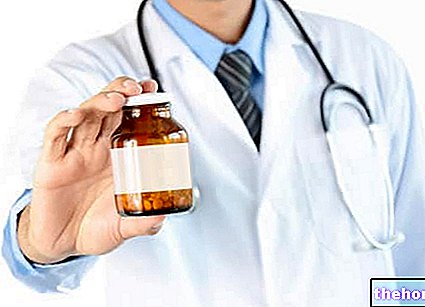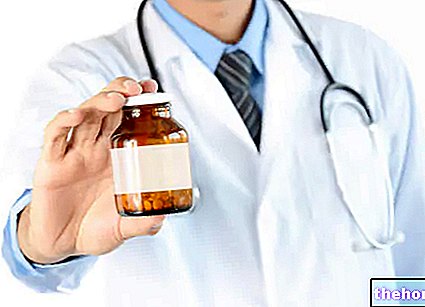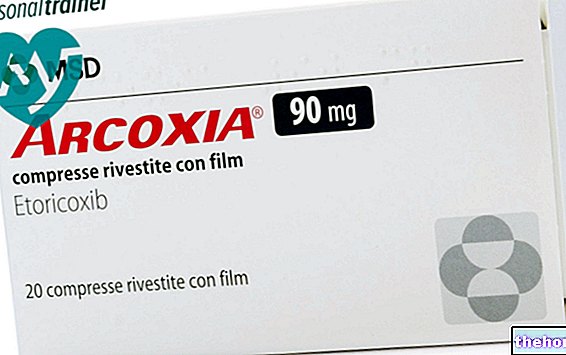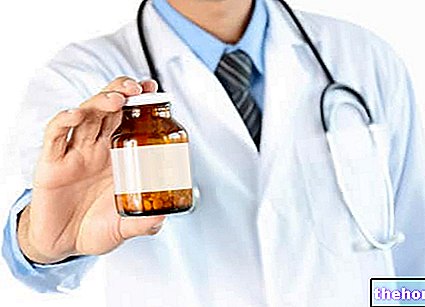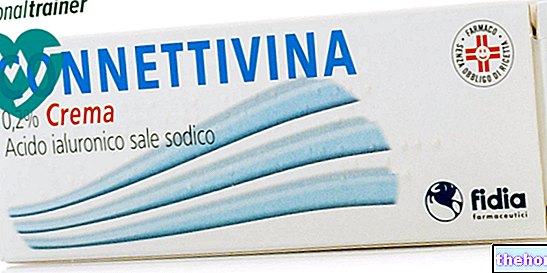Active ingredients: Branched chain amino acids
SIFRAMIN 40 mg / ml SOLUTION FOR INFUSION
Why is Siframin used? What is it for?
SIFRAMIN contains a group of substances called amino acids, essential for the human body and used to feed patients who cannot be fed by mouth (parenteral nutrition).
This medicine is indicated to supplement protein substances for waking up from a coma caused by severe liver damage (hepatic coma).
Contraindications When Siframin should not be used
Do not use SIFRAMIN
- if you are allergic to one or more amino acids or any of the other ingredients of this medicine (listed in section 6);
- if you have problems metabolizing amino acids;
- if you have severe problems with your kidney function (kidney failure).
Precautions for use What you need to know before taking Siframin
Talk to your doctor, pharmacist or nurse before using SIFRAMIN.
During treatment with SIFRAMIN, your doctor will subject you to specific laboratory analyzes to check the levels of mineral salts (hydroelectrolytic balance) and the pH of the blood (acid-base balance), and if necessary will restore the equilibrium by administering solutions. In addition, if your doctor deems it necessary, he will prescribe medicines to protect your stomach (H2 antagonists).
If you have diabetes, your doctor will monitor the amount of sugar you consume (caloric intake).
Interactions Which drugs or foods can modify the effect of Siframin
Tell your doctor, pharmacist or nurse if you are using, have recently used or might use any other medicines.
There are no known interactions with other medicines.
Warnings It is important to know that:
Pregnancy and breastfeeding
If you are pregnant or breast-feeding, think you may be pregnant or are planning to have a baby, ask your doctor or pharmacist for advice before using this medicine.
Driving and using machines
Not relevant.
Dosage and method of use How to use Siframin: Dosage
This medicine will be given to you by a doctor or other specialized staff as a slow infusion (intravenous drip) over a 24 hour period. If you are unsure, consult your doctor, pharmacist or nurse.
The recommended dose is 1000 ml of solution for the first day of treatment, which will then be increased to 1500 ml during the second and subsequent days, bearing in mind that the contents of a 500 ml bottle will be given to you by slow infusion directly. into a vein (intravenously) lasting about 8 hours. At the same time, you will be given an adequate amount of glucose at 50-70% (approximately 300-400 g in 24 hours).
The solution should only be used if it is clear, free of visible particles and if the container is intact.
Overdose What to do if you have taken too much Siframin
If you think you have been given too much SIFRAMIN, tell your doctor or another healthcare professional immediately.
If you have any further questions on the use of this medicine, ask your doctor, pharmacist or nurse.
Side Effects What are the side effects of Siframin
Like all medicines, this medicine can cause side effects, although not everybody gets them.
No undesirable effects have been reported after using SIFRAMIN.
Reporting of side effects
If you get any side effects, talk to your doctor or pharmacist. This includes any possible side effects not listed in this leaflet. You can also report side effects directly via the national reporting system at www.agenziafarmaco.gov.it/it/responsabili. By reporting side effects you can help provide more information on the safety of this medicine.
Expiry and Retention
Keep this medicine out of the sight and reach of children.
Do not use this medicine after the expiry date which is stated on the carton after "EXP".
The expiry date refers to the last day of that month.
Store below 25 ° C. Do not refrigerate or freeze.
Store in the original package to protect the medicine from light.
Do not throw any medicines via wastewater or household waste. Ask your pharmacist how to throw away medicines you no longer use. This will help protect the environment.
Deadline "> Other information
What SIFRAMIN contains
- The active ingredients are branched-chain L-amino acids. 1000 ml of solution contain 40 g of total amino acids which correspond to 12.5 g of Lisoleucine, 15.5 g of L-leucine, 12.0 g of L-valine. Each liter of solution contains 4.42 g of total nitrogen. pH 5.8-6.8.
- The other component is water for injections.
Description of what SIFRAMIN looks like and contents of the pack
Bottle of 100 ml, 250 ml, 500 ml, 20x500 ml, 1000 ml.
Source Package Leaflet: AIFA (Italian Medicines Agency). Content published in January 2016. The information present may not be up-to-date.
To have access to the most up-to-date version, it is advisable to access the AIFA (Italian Medicines Agency) website. Disclaimer and useful information.
01.0 NAME OF THE MEDICINAL PRODUCT -
SIFRAMIN 40 MG / ML SOLUTION FOR INFUSION
02.0 QUALITATIVE AND QUANTITATIVE COMPOSITION -
1000 ml of solution contain:
For the full list of excipients, see section 6.1.
03.0 PHARMACEUTICAL FORM -
Solution for infusion.
04.0 CLINICAL INFORMATION -
04.1 Therapeutic indications -
Parenteral supply in slow continuous perfusion of branched amino acids only for awakening from hepatic coma.
04.2 Posology and method of administration -
For intravenous infusion. The solution should be administered in doses of 1000 ml on the first day of treatment, while on the second day it is advisable to reach 1500 ml, bearing in mind that the contents of a 500 ml bottle should be infused over 8 hours. It is necessary to infuse the 50-70% Glucose mixed solution in an adequate quantity (300-400 g in 24 hours).
The infusion should be delivered over 24 hours in a slow infusion.
Use for slow drip administration.
04.3 Contraindications -
Hypersensitivity to the active substance (s) or to any of the excipients listed in section 6.1.
Disturbances in the metabolism of individual amino acids, renal insufficiency.
04.4 Special warnings and appropriate precautions for use -
It should be investigated whether H2-antagonists should be administered prophylactically.
Generally, especially in cases of greater seriousness, it is advisable to carry out checks on the hydroelectrolytic balance and the acid-base balance, providing, if necessary, for the administration of electrolytic corrections.
In particular, in the diabetic, due account must be taken of the caloric intake.
Use only if the solution is clear, free of visible suspended particles and if the container is intact.
Protect from light and store at a temperature not exceeding 25 ° C.
Keep out of reach of children.
04.5 Interactions with other medicinal products and other forms of interaction -
There are no known reactions with other medicines. However, adding drugs or other nutrients to the solution to be infused should be avoided.
04.6 Pregnancy and breastfeeding -
No information is currently available regarding the use of the product during pregnancy.
04.7 Effects on ability to drive and use machines -
Not relevant.
04.8 Undesirable effects -
Manifestations of a secondary nature when infusions are administered according to instructions and with careful assessment of the condition of individual patients.
Reporting of suspected adverse reactions
Reporting of suspected adverse reactions occurring after authorization of the medicinal product is important as it allows continuous monitoring of the benefit / risk balance of the medicinal product. Healthcare professionals are asked to report any suspected adverse reactions via the national reporting system. "address http://www.agenziafarmaco.gov.it/it/responsabili.
04.9 Overdose -
No particular procedure
05.0 PHARMACOLOGICAL PROPERTIES -
05.1 "Pharmacodynamic properties -
Pharmacotherapeutic group: amino acids, solution for parenteral nutrition, ATC code: B05BA01.
SIFRAMIN is a solution consisting of a mixture of synthetic branched-chain L-amino acids in crystalline form at a concentration of 4% which plays a fundamental therapeutic action in awakening from hepatic coma, with better results than those obtainable with traditional therapies (lactulose, neomycin , etc.).
05.2 "Pharmacokinetic properties -
The branched-chain amino acids supplied by intravenous infusion have a pharmacokinetic profile comparable to that of the amino acids supplied with enteral feeding.
05.3 Preclinical safety data -
The i.v. in rabbits, 40 ml / kg of the product (equal to 1.33 times the maximum therapeutic daily dose) did not induce any significant changes in blood pressure, respiratory rate and peripheral nervous system function.
In the undernourished rat, i.p. for 20 days of 30 ml / kg of the product (equal to a maximum therapeutic daily dose) induced a greater weight gain compared to controls and a reduction in mortality from hypoalimentation.
The same dose administered twice in succession in the guinea pig 27 days apart (the first by the i.p. route and the second by the i.v. route) did not produce immediate or late symptoms characteristic of the anaphylactic syndrome. The same dose administered i.v. repeatedly in the rabbit (12 consecutive days) did not induce the appearance of circulating antibodies. Always the same dose administered i.v. every other day in the guinea pig seven times did not change the complement fixation test. From the results of these last three tests, any immunogenic activity of the product is excluded in the laboratory animal.
From the toxicological point of view, the results of the studies conducted are completely reassuring. In the toxicity tests for single administration the specialty was used in the ip rat at doses from 10 to 60 ml / kg and in the rabbit iv at doses from 20 to 50 ml / kg (i.e. up to 2 times the maximum daily therapeutic dose) without inducing any case of death in treated animals. 0.25 to 1 maximum therapeutic daily dose, there was no death in the treated animals nor did any particular toxic symptoms appear.
Finally, the product did not cause any negative effects on gestation and embryofoetal development of rats and rabbits.
06.0 PHARMACEUTICAL INFORMATION -
06.1 Excipients -
Water p.p.i.
06.2 Incompatibility "-
Not known.
06.3 Period of validity "-
2 years
06.4 Special precautions for storage -
Store in the original package to protect the medicine from light. Do not store above 25 ° C.
06.5 Nature of the immediate packaging and contents of the package -
Bottles of 100-250-500-1000 ml.
Not all pack sizes may be marketed
06.6 Instructions for use and handling -
Unused medicine and wastes derived from this medicine must be disposed of in accordance with local regulations.
07.0 HOLDER OF THE "MARKETING AUTHORIZATION" -
Fresenius Kabi Italia S.r.l.
Via Camagre, 41 - 37063 Isola della Scala (VR)
08.0 MARKETING AUTHORIZATION NUMBER -
Bottle 100 ml A.I.C. n ° 029165014
Bottle 250 ml A.I.C. n ° 029165026
Bottle 500 ml A.I.C. n ° 029165038
1000 ml bottle A.I.C. n ° 029165040
20 bottles 500 ml A.I.C. n ° 029165053
09.0 DATE OF FIRST AUTHORIZATION OR RENEWAL OF THE AUTHORIZATION -
November 15, 1994 / November 15, 2009.
10.0 DATE OF REVISION OF THE TEXT -
November 2015

